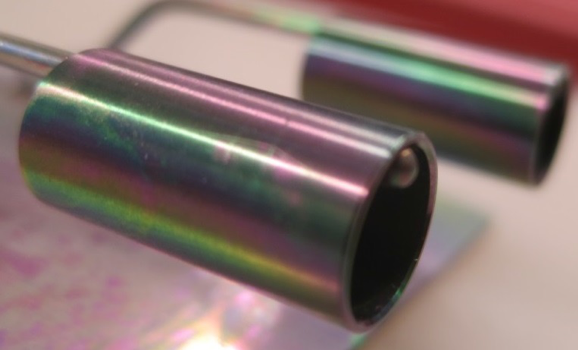The patented solution of scientists from the Institute of Physics and Czech Technical University prolongs the lifetime of nuclear fuel rods under nuclear reactor accident and working conditions by coating the surface of fuel rods by a thin polycrystalline diamond layer. The experts were inspired to research in this area by the accident in Fukushima. The Czech patent was granted by the European Patent Authority last week and now it is looking for its transfer to commercial practice.
The results of the research have been convincing and despite the valuable material, the manufacture of nanocrystalline diamond layer is not unattainable. Researchers are looking to obtain a patent in the USA and South Korea. At the moment, the Centre for Innovation and Technology Transfer of the Institute of Physics of the Czech Academy of Sciences is offering a licence to use (LTU) for this technology to leading European, Asian and American nuclear fuel producers.
“It is a completely new way of fuel cell surface protection,” says Irena Kratochvílová from the Institute of Physics of the Czech Academy of Sciences. “Practically no one expected that a very thin heterogeneous polycrystalline diamond layer would worsen the conditions for metal substrate corrosion in a nuclear reactor so significantly, even by tens per cent at working as well as accident temperatures,” adds the scientist who significantly contributed to the research.
Also tests of protection of Zr alloys against corrosion by the application of double layer coating had very good results. “In comparison with untreated samples, these double layer coatings decrease surface oxidation by 88% at working and by 17% at accident temperatures of the reactor,” the co-author of the solution points out.
The innovative solution of the anti-corrosion protection of the surface of Zr alloys used in nuclear reactors was patented in the Czech Republic by Radek Škoda, Jan Škarohlíd (for the Czech Technical University) and Irena Kratochvílová, František Fendrych, Andy Taylor (for the FZU) already in 2015. The patent was supported by further research and extensive tests within a TACR project in collaboration with Westinghouse.
The application for a European patent was filed with the European Patent Office in Hague in 2016. In April 2020 the European Patent Office granted the patent.
The solution will significantly reduce the environmental impact
“After Fukushima, all nuclear fuel producers have been investigating and testing more resistant coatings and in the following ten years we will witness their common use in all reactors in the world,” says Radek Škoda, who at present works at the Czech Institute of Informatics, Robotics and Cybernetics of the Czech technical University.
The primary reason was to reduce, or prevent, high temperature oxidation of zirconium at accident conditions with temperatures exceeding 800°C. During this exothermic reaction, a huge amount of heat is released. Also, large production of hydrogen gas can result in a hydrogen-air chemical explosions. In this case, corroded zirconium rods can crack and release radioactive substances into the primary circuit. The release of heat also further complicates the cooling of the active zone and enhances the further course of high-temperature oxidation of the zirconium alloy. According to the patent, this type of corrosion of zirconium alloys is reduced by covering the outer surface of the nuclear fuel with a protective layer consisting of a polycrystalline diamond layer.
“Further research however revealed also significant potential of the polycrystalline diamond layer in fuel cell corrosion reduction, by up to 40% at a reactor working temperature,” says Radek Škoda. This will prolong the time of use of nuclear fuel which is typically removed from reactors for the reason of corroded surface, not of sufficient burnup.
The layer efficiently protects also at accident temperatures
Traditionally, for protection against corrosion of the surface of metallic materials in a high-temperature water environment, coating with water-impermeable protective layers (typically special alloys or ceramics) was used. If, however, as a result of changes in the volume of the substrate material at elevated temperatures the water-impermeable protective layer cracks, corrosion of the substrate metal material will develop very rapidly at the locations of the new cracks.
The main and very specific anti-corrosion effect of a polycrystalline diamond coating is that the carbon from the diamond layer gradually penetrates into the surface of the substrate zirconium material with increasing temperature and changes its physical and chemical properties. This significantly reduces the zirconium corrosion and hydrogen penetration into the zirconium surface. The protective polycrystalline diamond layer thus actively prevents the oxidation of the substrate, regardless of defects and cracks caused especially at accident temperatures.
Contact:
doc. Ing. Irena Kratochvílová, Ph.D.
Institute of Physics of the Czech Academy of Sciences
email: krat [at] fzu [dot] cz
Czech Institute of Informatics, Robotics and Cybernetics of the Czech technical University.
phone: 224 354 158
email: Radek [dot] Skoda [at] cvut [dot] cz
